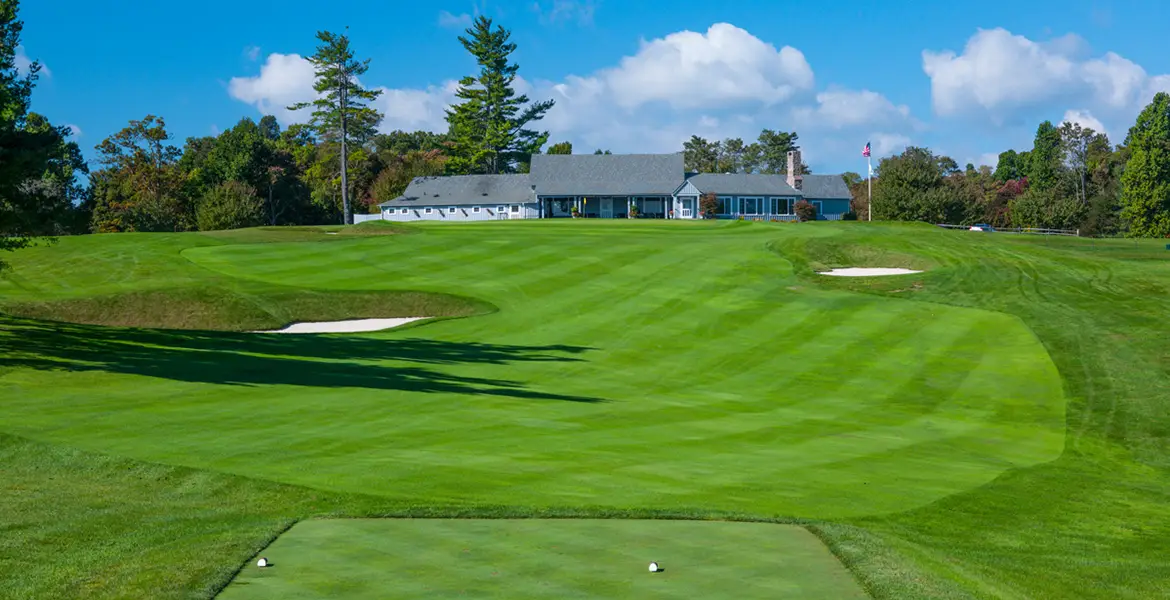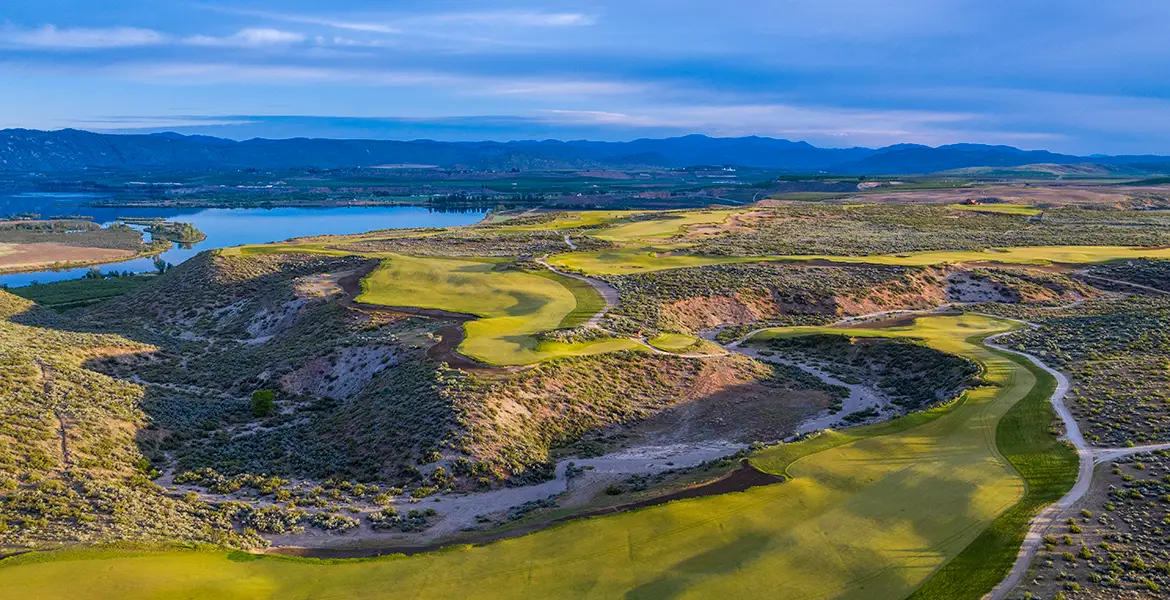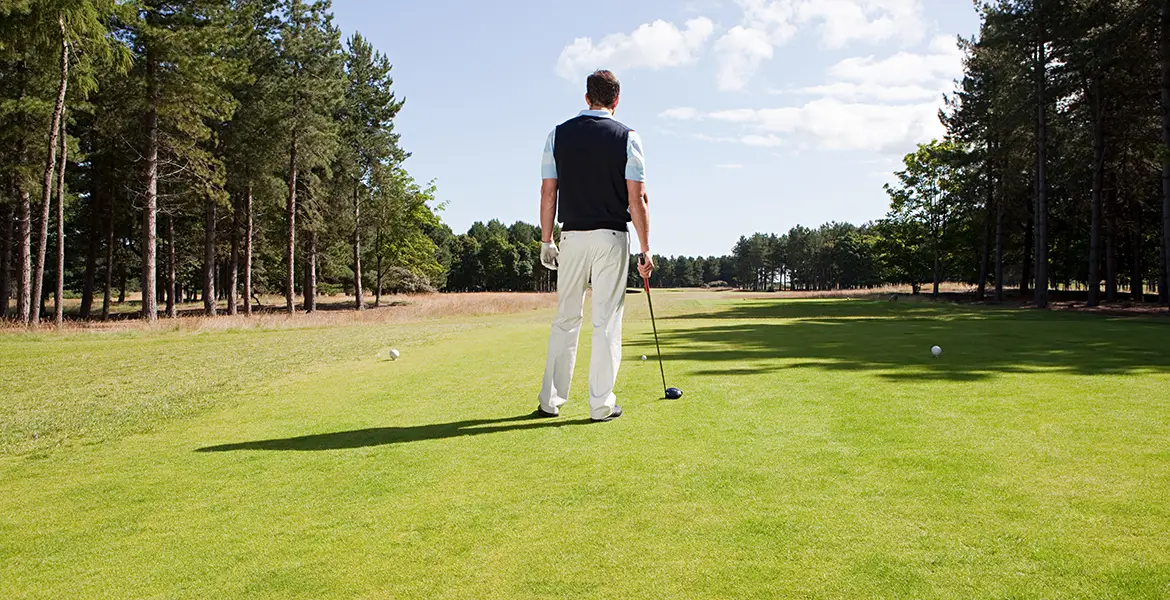Donald Ross’s original greens for Pinehurst No. 2 lacked one critical component—grass
Only a dozen years old yet already a burgeoning golf mecca, the Pinehurst Resort saw its reputation soar soon after Donald Ross expanded and redesigned Pinehurst No. 2 in 1907. Dozens of golf ’s most influential figures praised the layout in reverential terms. Walter Travis, winner of the U.S. Amateur in 1900, 1901, and 1903, led the parade.
“Maintenance upon the highest lines, combined with attractiveness and variety, place it among the very few famous courses of the world,” said Travis of No. 2. “It is absolutely unique in this country, a modern course for the modern ball; a distinct value being given to a particular shot on each hole—a course which makes you think. Certain holes will be quoted from one end of the country to the other.”

Perhaps most remarkable to modern sensibilities is that No. 2 earned all these accolades despite its greens, which were neither green nor grass. From the summer of 1907 through the spring of 1935, its putting surfaces were sand.
Architect Richard Mandell, who has renovated and restored 11 other Ross courses, explained the need for sand greens in his 2013 book, The Legendary Evolution of Pinehurst.
“Since a sufficient strand of grass was not achievable due to the heat of the summer, the putting greens were built of a clay and sand blend,” he wrote. “The first Pinehurst greens were not the inverted bowls of later years but very flat, sixty-foot-by-sixty-foot squares.”
Mandell noted that the greens were flat because conditions wouldn’t allow any contour for fear of washouts from rain and the inherent difficulty in evenly spreading sand through daily maintenance practices. In an April 2024 interview with LINKS, Mandell explained that with the sand base Pinehurst’s Sandhills location provided, it was difficult to grow grass. “The grassroots don’t retain water as much as they do in clay or loam soils that you’ll find further north because water just goes through sand a lot quicker.”

Regardless of the subsurface, sand greens proliferated nationwide in areas where there was little rainfall, or irrigation water of any kind, or the means to import it. Where even a primitive irrigation system was cost-prohibitive, bare soil or oiled sand provided a smooth-rolling substitute for grass on greens.
“Oiled sand greens were developed by simply excavating a green cavity perhaps six to eight inches deep, filling it with a medium to fine sand, then drenching it with used motor oil,” explained architect Dr. Michael Hurdzan in his 2004 book, Golf Greens: History, Design and Construction. “The oil kept out the weeds and burrowing insects, as well as helped to bind the sand particles together to resist wind erosion.
“Since approach shots to sand greens don’t hold or check up very well, the technique for playing on a sand green is a bump-and-run style,” wrote Hurdzan. “Once a golf ball is on the putting surface, it is marked, and the area between the ball mark and the hole is smoothed down of footprints, ball marks and so on. Smoothing is done with a toothless rake, called a ‘smoother,’ or a broom, a piece of carpet, or a drag mat. Then the ball is replaced and putted.”
Pinehurst No. 2 a century ago may have been one of the nation’s greatest courses, yet it called for radically different playing techniques if one was to prosper. Travis, Francis Ouimet, and Walter Hagen all triumphed on the sand dance floors. Maureen Orcutt would win the first of three consecutive North & South Women’s Amateurs in 1931, the same year she revealed how she coped with the sand greens. “We used what was called the ‘Texas Wedge’ [putter] from fifty yards in,” she said. “You couldn’t hit the ball to the green because it would bounce over those hard greens.”

As the 1920s came to a close, Ross had become an unquestioned master at crafting grass greens in other locations. Yet, he waged a strong defense of Pinehurst’s sand-clay putting surfaces in an early 1930s travel article by John Vavasour Noel.
“Many people ask us about our sand greens and while many courses make it a point to advertise that they have grass greens, I feel that the best players like sand greens, particularly the professionals, on account of their accuracy… If a vote were taken among our members, I’m sure that it would be 95 percent in favor of retaining them.”
Ross may have been waving the flag, but it was a false flag—pure propaganda. Pinehurst owner Leonard Tufts had been searching for a grass solution since the late 1890s. Ross, Tufts, and superintendent Frank Maples had worked ceaselessly for years to solve the problem. Sparse, inconsistent fairway grass remained an issue, as well. Fittingly, it was manure that paved the road to success.
“I shall never forget the thrill I got when in looking out of the car window coming up from Florida, I saw several real sods of Bermuda, ten feet square or more, in a sandy, dusty mule pen, where the mules were turned out on Sundays when not being worked,” recalled Tufts. “From this glimpse I knew with plenty of animal manure we could make a sod.”

With the right combination of binding agents and nutrients, plus subsequent experiments with different grasses, Pinehurst would soon embrace the grass green era. Ross and Maples built a test plot next to the first tee of No. 2 in 1924 and built the first trial version of a grass green next to a new sand green on the 3rd hole in 1927. Not until a new irrigation system was perfected, however, did No. 2 establish two additional grass greens—at holes 1 and 2—in 1934. Amid positive feedback, Pinehurst converted the remaining greens to the new Bermuda grass in May 1935, 18 months before it would host its first major, the PGA Championship.
Newly enlarged, reconfigured from the simple circles/ovals they had become, and completely recontoured, the grass greens at Pinehurst No. 2 were an instant hit. No less an authority than A.W. Tillinghast gushed about them shortly after they debuted. “These new greens are quite as fine as anyone could wish to play or putt over,” said Tilly. “They are undeniably fine, of lovely uniform color and true as steel. Nothing was lost on me, and after our round together, I told him [Ross] with all honesty that his course was magnificent, without a single weakness, and one which must rank with the truly great courses in the world today.”
Pinehurst was only one among many first-rate clubs across the country, and especially in the South, that grassed over their sand greens in the era. While they were designing and constructing nearby Augusta National in 1932–33, designer Alister MacKenzie and builder Wendell Miller turfed the sand putting surfaces at Palmetto Golf Club in Aiken, S.C. At Georgia’s 9-hole Brunswick Country Club, Ross added nine new holes in 1938, then came back in 1939 to redesign the old nine and install grass on all 18 greens.
You would think that sand greens would have died that spring day at Pinehurst in 1935, gone the way of gutta-percha balls, hickory-shafted rut irons, and dodo birds. You would be mistaken. Sand-green courses endure, though they’re hardly thriving. There’s no source that keeps track, but best guesstimates are around 100 total sand-green layouts in existence, primarily across the Great Plains and in the prairie provinces of Canada. They are virtually all 9-hole, regulation-length courses.

Hale Irwin grew up on a sand-greens spread in Kansas. So did Casey Old, current Director of Rules & Competitions for Central Links Golf, which covers the Jayhawk State. In the late 1990s, he competed in the High School State Sand Greens Golf Tournament, an event that continues in 2024, under the auspices of the Kansas State High School Activities Association. Old remains bullish on the greens of his youth, even as he acknowledges their inevitable fade.
“When I graduated from high school in 1998, there were probably 25 to 30 sand-green courses in Kansas,” he says. “Today, there are 15 that I’m aware of, all nine holes. A couple of them must have closed, but the others have evolved into grass greens or synthetic turf.”
Old learned the game at Lakeside Golf Course in Yates Center, a town in southeast Kansas. He clearly warms to the topic of modern sand greens at his childhood club and beyond.
“Every sand-green golf course in Kansas has greens that are the exact same dimensions,” says Old. “They’re probably 20 paces wide, maybe 20 paces across. The closer you are, the more likely the ball’s going to react the way you want it to. Rolling the ball onto the green from a far distance is probably the best way to get the ball to stop.”

Most sand-green courses now rely on recycled vegetable oil rather than motor oil to mix into the sand, keeping on the good side of the EPA. Surprisingly, good sand greens can putt quick and true.
“A sand green that didn’t have a ton of sand on it, where you were basically putting on the very compacted sand base, you might see something that was seven or eight [on the stimpmeter],” says Old. “If you dragged yourself a nice path, all you’d have to do is hit it straight.”
Why keep sand greens? “Cost,” says Old. “Not just the cost to convert from sand greens to grass greens, but the long-term expense of it is prohibitive to most of these small towns where these golf courses still exist.”
Old identifies Tipton Oaks in Tipton, Kan., as an ideal example of a sand-green course with an excellent layout and facility. “It’s one of those places, like a lot of them, where a great deal of community pride and effort goes into maintaining these little 9-hole sand-green golf courses.”
A ray of enlightenment for sand greens flickers in, of all places, Southern Pines, N.C., next door to Pinehurst. Architect Kyle Franz, while restoring the Donald Ross designed Southern Pines Golf Club in 2021, built a “lost” par-three hole in its original spot, in the woods next to the 4th green. Adjacent to that reimagined green, Franz also constructed a small sand green in homage to long-ago golf in the Sandhills. Circular in shape, the putting surface sports a clay base, mixed with sand, and topped with more sand, representing precisely what the “greens” of Pinehurst and Southern Pines once were. It isn’t used much, but it’s there.
Understandably, golf has mostly moved on from sand putting surfaces. For a sport that worships its past, however, sand greens are an engaging reminder of the game’s simple, intrinsic appeal.
Thank you for supporting our journalism. If you prefer to read in print, you can also find this article in the Summer 2024 issue of LINKS Magazine. Click here for more information.







Great read!!
During the mid 60s I was in high school Lake County HS) in Leadville, CO. Leadville sits at an elevation of 10,152′ above sea level. I worked as the “greens” keeper for a season and spent many hours maintaining the oiled sand greens. At that time it was extremely difficult to keep grass greens through the long and severe winters. Fairways were cut with a front crank John Deere tractor.